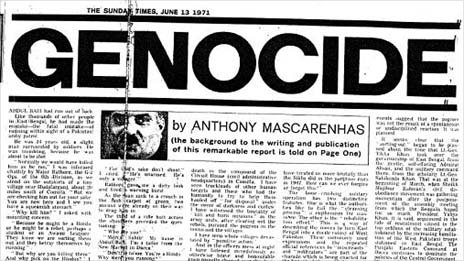The hartal (general strike) today put a spoke in the works. Our driver Joshim needed to drop me off at the airport and be back at base before sunrise. The young tailor Biswajit Das having been brutally murdered in full view of the police and the media, meant we could take no chances. Joshim had been sleeping downstairs in order to be at ours at such a ridiculous hour. Rahnuma rang him at 4:00 am, and soon a groggy Joshim, Rahnuma and I were off to the airport. Rahnuma and I have never had the luxury of seeing each other off, but it didn’t feel safe for Joshim to be heading home on his own. So Rahnuma volunteered to be body guard on the return trip.
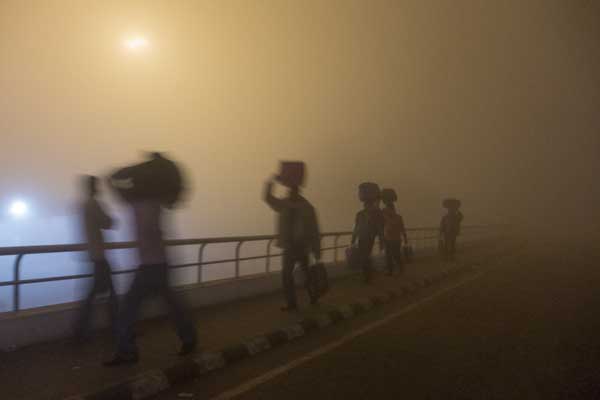
There was no traffic. At least none that we could see through the incredibly dense fog. The headlights made things worse with the fog itself being lit up by the headlight and shining the light right back at us. Without the headlights, once could at least barely make out the edges of the road. The risk of being beaten up by thugs in the street, had been replaced by the risk of getting run over by a fog blinded truck. At least we had a vehicle of our own and the option of travelling as we pleased. Continue reading “Airport blues”
Tag: politics
Communal attacks in Ramu: of family feuds and corporate culture
by Rahnuma Ahmed
SUPREME Court lawyer Barrister Jyotirmoy Barua, 39, initiated a writ petition immediately after the violent attacks of September 29, 2012 when innumerable Buddhist monasteries, temples and houses in Ramu, Cox?s Bazar district, were set on fire, pillaged and looted by Bengali Muslim men, mostly youths. The attackers included both locals and outsiders, angered at the news that a picture defaming the Holy Qur?an had been discovered on a Buddhist youth Uttam Kumar Barua?s facebook account. Investigative reports reveal that the allegations against Uttam were manufactured since the picture had been tagged to his account; credible news reports also reveal that the attacks were pre-planned and pre-meditated, a view subscribed to by both the ruling party and the major opposition party, who, however, blame each other for the attacks.
Jyotirmoy Barua returned to Bangladesh last year after completing his Bar-at-Law; he lived in the UK for nearly nine years, partly financing his studies as karate instructor. He has filed the writ on the basis of being personally ?aggrieved? since he belongs to Ramu. It challenges the ?inaction? of the police; hearings have begun.
The interview is based on transcripts of recorded conversations held with Barrister Jyotirmoy Barua on four different occasions totaling more than fifteen hours. I am grateful to him for having taken me into his confidence, for having gone through the draft and suggested modifications. Continue reading “Communal attacks in Ramu: of family feuds and corporate culture”
CONCLUDING PART: Govt response to communal attack in Ramu
by?rahnuma ahmed
In today’s column, I basically deal with three issues, firstly, a brief review of the government’s administrative responses, these suggest that higher-ups have ‘settled’ on making the officer-in-charge of Ramu thana the “fall guy” for the devastating waves of attacks on Buddhist temples, monasteries and houses on September 29; secondly, my examination of the report of the probe committee formed by the home ministry to investigate the occurrences in Ramu inclines me to think that the committee has produced a report according to the home minister’s requirements and guidelines as outlined in his public speeches instead of? investigating impartially as the committee is duty-bound to; third, in order to create appearances of communal harmony post-Ramu, government officials, ruling party members and ideologues, mostly Muslims (plus a few Buddhist quislings), have participated in government-funded Probarona celebrations this year, which has led to the (forceful) de-linking of religious rituals from a set of embodied practices which are a part of the Buddhist tradition; it bespeaks of government interference (hijacking), which again, is unconstitutional (freedom of worship).
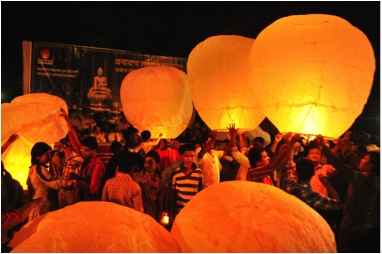
Continue reading “CONCLUDING PART: Govt response to communal attack in Ramu”
Sri Lanka's stars bridge past, future
Sri Lanka faces Pakistan in an ICC World Twenty20?semifinal
Updated:?October 4, 2012, 5:07 PM ET
By?Wright Thompson?| ESPN.com
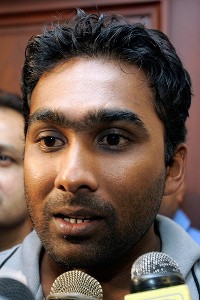
COLOMBO, Sri Lanka — Three years ago, the Sri Lankan cricket team rode through the streets of Lahore, Pakistan, on the third day of a five-day test match. Team captain Mahela Jayawardene, who is to his country what Derek Jeter is to the city of New York, rode near the back of the bus. The convoy, with a police escort, rolled through the streets outside the stadium. Mahela, known as MJ, took out his phone to call his wife, and that’s when they all heard what sounded like fireworks. Someone shouted, “They’re shooting at the bus!” They heard the bullets, marching down the side exposed to the terrorist gunmen, sounding like rain on a metal roof. Mahela dove for the floor, and the first 30 seconds of what happened next ended up on Christina Jayawardene’s voice mail. An RPG flew over the bus. A grenade rolled under it. It was a blur: policemen being shot in the street, dying on a Tuesday morning, bullets striking the tires, players screaming. When she played the message for Mahela’s oldest friend, tears flowed down her face as he listened. Continue reading “Sri Lanka's stars bridge past, future”
Rubbing shoulders: Aung San Suu Kyi, Abbas Kiarostami, Gayatri Spivak
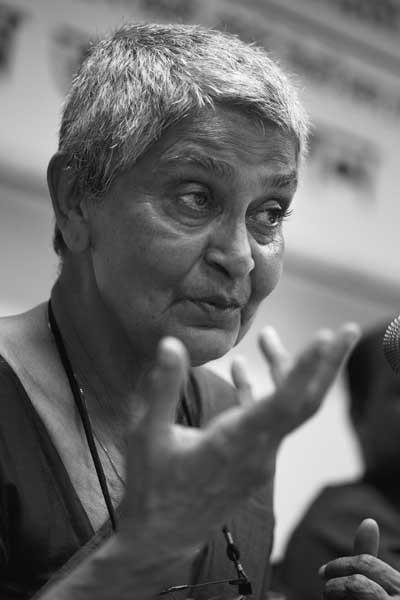
She was witty, connected, caring and sharp. Seamlessly moving between colloquial Bangla, bhodrolok Bangla and English, Spivak mesmerised, but did a few ticking offs too. All in her charming style so it took you a while to work out that a steam roller had gone over you. It was standing room only in packed seminar room at Dhaka University. Spivak was one of five visiting speakers, but clearly the one they had all come to see.
I was lucky as I had just returned from Tehran, when Rahnuma told me of the event, and Chulie and Yan managed to get my 100mm macro lens to me in time and I pedalled off to Dhaka University.
A couple of days back, I had made my way to Chiraz Square in Tehran to meet up with my old friend, the brilliant film maker and photographer Abbas Kiarostami. I returned with an arm load of books, including his early masterpiece, Snow White. Here are a couple of pictures from the book:

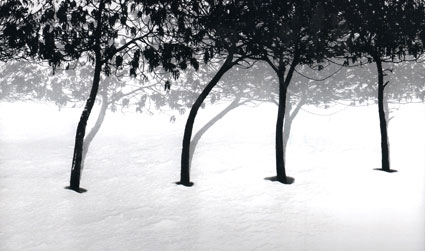
The meeting earlier with Aung San Suu Kyi, in Myanmar was opportunistic. But hey with people like that, one doesn’t care how it works out 🙂
Part IV Military-installed caretaker govt, or a 'consortium' govt?
BY RAHNUMA AHMED
But let me return to the central question: is it reasonable to claim that western governments were directly involved in the consortium project? That they were, as I argue, not only one of the constitutive elements, but the leading one?
Some may reply that the presence of the Coffee Group (generally known as the “Tuesday Club”), the frenzied activity of its members prior to the consortium coup, and after — settles the matter. That, the evidence of their activities is well-documented in both print and electronic media, that it is considerably strong, and that convictions on the basis of far less circumstantial evidence have been awarded by courts of law, ones that enjoy credibility.
A WikiLeaks leaked cable dated January 11, 2007 (Subject: Diplomats Coordinate Strategy On Bangladesh, Reference ID: 07DHAKA53), signed by Patricia Butenis, then US ambassador to Bangladesh, describes the Tuesday Club thus to her superiors in Washington, Continue reading “Part IV Military-installed caretaker govt, or a 'consortium' govt?”
Hana Jheel
The security concerns in Quetta make it difficult for a foreigner to get about. Wearing Shalwar Kameez (had no idea so much cloth went into these garments) and having a beard helped. At least I made it outside of Quetta, if only to a tourist spot. Nothing as exciting as the Bazkhoshi event I went to yesterday,
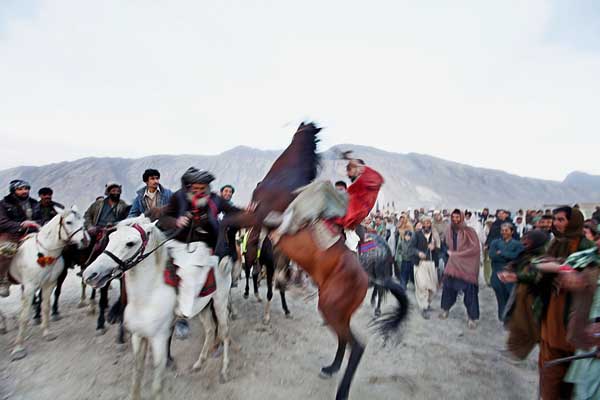
but hey, if your client needs a pretty picture and things are difficult, a lake at sunset will do nicely, thank you!
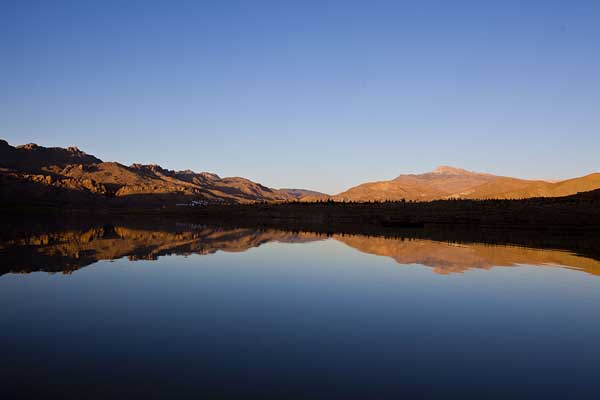
The garbage dump was apparently in the vicinity of an army camp. So my picture taking suddenly became a security concern. This time I was the peacemaker as the solder was picking on one of my minders. Having reduced testosterone levels, we went off to our next location, Quetta’s shoot up alley.
So driving out to see the clay mountains in Bostan was a welcome treat. An approaching sandstorm made it necessary to beat a hasty retreat. The blistering wind didn’t help. Careful watching the video if you have vertigo!
Taking Beitar to task: Mohammed Ghadir
Subscribe to ShahidulNews
Striker Mohammed Ghadir puts Israeli anti-racism to the test
By James M. Dorsey

Maccabi Haifa striker Mohammed Ghadir believes that he and Beitar Jerusalem, the bad boy of Israeli soccer, are a perfect match.
“I am well suited to Beitar, and that team would fit me like a glove. I have no qualms about moving to play for them,” Mr. Ghadir is quoted by Israeli daily Ha?aretz as saying. Beitar has a large squad, a significant fan base, wide media coverge and lacks talented strikers, he says.
There is only one hitch: Beitar doesn?t want Mr. Ghadir. Not because he?s not an upcoming star and not because they wouldn?t need a player like Mr. Ghadir but because the striker is an Israeli Palestinian. “Our team and our fans are still not ready for an Arab soccer player,” Ha?aretz quotes Beitar?s management as saying. The club prides itself on being the only top league Israeli club to have never hired a Palestinian player in a country whose population is for 20 per cent Palestinian and in which Palestinians play important roles in most other top league teams. Continue reading “Taking Beitar to task: Mohammed Ghadir”
Bangladesh war: The article that changed history
By Mark Dummett BBC News
On 13 June 1971, an article in the UK’s Sunday Times exposed the brutality of Pakistan’s suppression of the Bangladeshi uprising. It forced the reporter’s family into hiding and changed history.
Abdul Bari had run out of luck. Like thousands of other people in East Bengal, he had made the mistake – the fatal mistake – of running within sight of a Pakistani patrol. He was 24 years old, a slight man surrounded by soldiers. He was trembling because he was about to be shot.
So starts one of the most influential pieces of South Asian journalism of the past half century.
Written by Anthony Mascarenhas, a Pakistani reporter, and printed in the UK’s Sunday Times, it exposed for the first time the scale of the Pakistan army’s brutal campaign to suppress its breakaway eastern province in 1971.
Nobody knows exactly how many people were killed, but certainly a huge number of people lost their lives. Independent researchers think that between 300,000 and 500,000 died. The Bangladesh government puts the figure at three million. Continue reading “Bangladesh war: The article that changed history”
Children's Art and Children's Rights
Subscribe to ShahidulNews
Published on Saturday, September 24, 2011 by CommonDreams.org
by Claudia Lefko
We?ve been here before, confronting this question of children?s art, and why it creates such a stir. I wrote about it in May 2006 when Brandeis University cancelled an exhibit of Palestinian children?s art. This cancellation seems even more egregious because the museum in question is specifically a children?s museum.
Who objects to children?s art in a children?s art museum? And, what should we make of a children?s museum that allows the concerns of those constituents to censor the views of children, denying their right to expression? I?m talking about the Oakland Children?s Museum (MOCHA) and its decision to cancel the exhibit A Child?s View of Gaza, which was to have opened there this week, on September 24.
One can only conclude that those who have objected to this exhibit are troubled by the content. For whatever reason they want it buried, out of site and out of mind. They must be a powerful group. They succeeded in convincing the museum?s board to ignore its stated goal of ?…advocating for the arts as an essential part of a strong, vital and diverse community?. And, they have put the museum in the uncomfortable position of denying Palestinian children their rights as guaranteed by Article 12 of the UN Convention on the Rights of the Child (CRC): the right of every child to express his or her views and to have those views given due consideration.
?The artist’s job is to be a witness to his time in history.? said the artist Robert Rauschenberg, and so it is with our young artists. Seeing, as we know, comes before words. A child looks and recognizes people, places and things before she or he can speak; ?views? are developing from the moment of birth. So, imagine the views taken in during the long, wide-eyed hours of childhood in Palestine or in Baghdad on in Afghanistan. Imagine the tension, worry and preoccupation on the faces of the adults; imagine the looks on the faces of the of soldiers as they patrol the streets, or search homes. Imagine the hundreds upon hundreds of violent scenes that could and do play out in front of children living in war zones. This is their world. It surrounds them day in and day out. And oftentimes, they have not only no words, but no opportunity to tell us what they think and feel about this.
Taking crayon or pencil in hand, a child speaks out on his or her own behalf: this is me, my situation, this is what my life looks like. It isn?t easy for adults to bare witness to these stories. I?ve seen exhibits of children?s art from Hiroshima, from Spain during the Civil War, from Viet Nam, from Darfur, from the concentration camps in WWII and from Iraqi children. What we see in some of this art is the human cost of war, the terror and agony of being a child in an unpredictable, dangerous and violent world, a world gone inexplicably mad. A world where you are not safe, where even your parents cannot protect you.
This art is not about politics, it is about the human condition. If we cannot look at it, if it is too painful, it is because the world we have created, full of violence and conflict, is not one that is good for children. The famous 60?s poster with one giant flower said it all: War is Not Healthy for Children and Other Living Things.
We have a legal as well as a moral obligation to let Palestinian children, and all children express their views freely and to give those views our due consideration. If we are disturbed by children?s images from war zones, we should work on their behalf to create a better, more just and peaceful world , a world where children are truly valued and where their care, protection and overall well being is a social, economic and political priority. To do anything less is to deny the significance of children as the future of our planet.
Aldous Huxley wrote this, in his introduction to ?They Still Draw Pictures! A collection of 60 drawings made by Spanish children during the war? (1938): The most that individual men and women of good will can do is to work on behalf of some general solution of the problem of large-scale violence and, meanwhile to succour those who, like the child artists of this exhibition, have been made the victims of the worlds collective crime and madness.
The museum, in canceling the exhibit has dealt yet another blow to children and their rights; surely a children?s museum, of all institutions, can do better than this.
To see examples from this exhibit: mocha.org
Claudia Lefko is the founding director (2001) of The Iraqi Children’s Art Exchange in Northampton MA. She is a long-time educator, activist and advocate for children.

